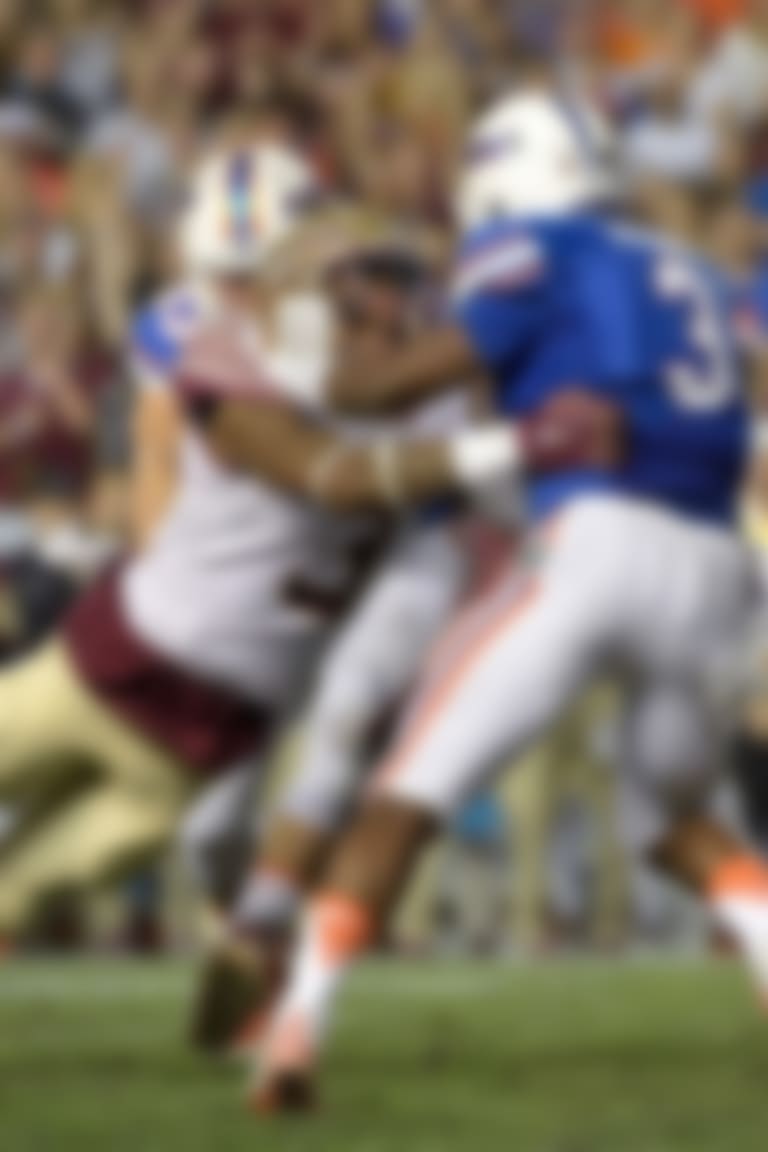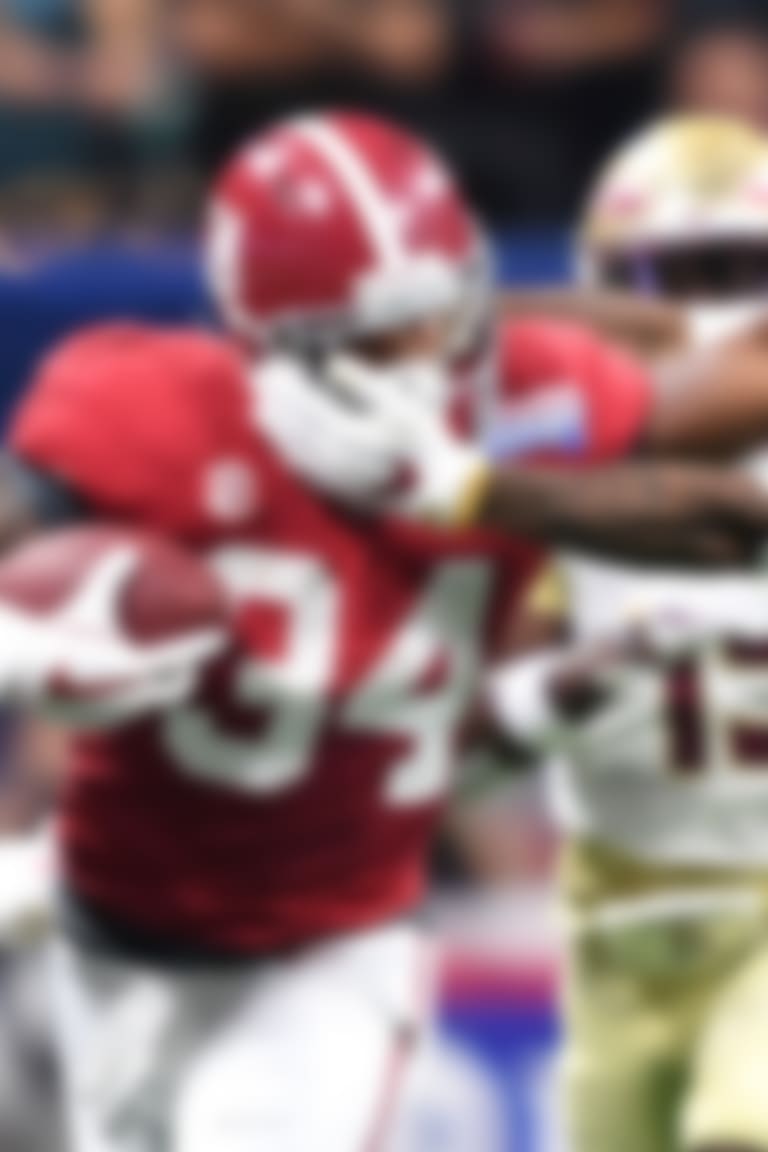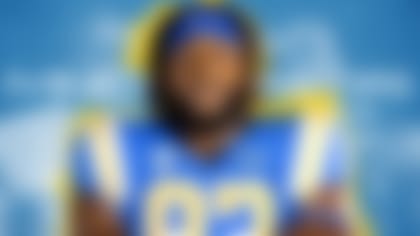He might be college football's most freakish athlete, one reason why scouts see a future NFL superstar in Florida State safety Derwin James
By Chase Goodbread | Published Sept. 13, 2017
TALLAHASSEE, Fla. -- Long before Derwin James emerged as one of college football's elite talents, before he was a five-star recruit, before the nation knew his name, his mother knew what was coming.
Shanita Russell had no doubt after the realization -- a "vision," she calls it -- that James' name would be in lights, his games would be on television, and his talent would take him to the top. So she took him home.
"Since we were from Haines City," Russell said, "I moved him back there so when they said his name on TV, they said, 'From Haines City, Fla. ...' "
The vision came to fruition two years ago, when James cracked the starting lineup at Florida State as a freshman and established himself as one of the game's most dynamic defenders.
Now, after just two seasons of college football, NFL scouts already have a vision of their own about James. They see a future star; a spectacular athlete who can play multiple positions and transform a defense with a rare mix of talent and charisma.
Working with freakish athletes is nothing new to FSU strength and conditioning coach Vic Viloria. Over the last 13 years, from LaRon Landry to Devonta Freeman to Dalvin Cook, he's seen them come and go. And this is how he sums up James: "It'll be some time before I see another one like this. Maybe never."
He's not just talking about James' athleticism -- more on that to follow -- but what the redshirt sophomore can do in a weight room is almost as breathtaking as what he can do on a football field.
"The first time I saw him, he was doing dumbbell presses," Viloria said. "He grabbed the 120s, and I thought, 'You're going to kill yourself, bud.' He sat down and somebody brought him the dumbbells. That grabbed my attention. Here's a true freshman, and somebody's bringing him the dumbbells? I knew he must have earned some respect outside of the building. Then I watched him do it, and he crushed it. But I wasn't going to allow myself to get caught up in it yet."
It wouldn't take long.
A few months later, before James had even played a down for the Seminoles, Viloria posted a video of James leaping clear over a standing man. A close look at the clip shows the prop ducked slightly to avoid contact; an even closer look shows he didn't need to.
James is a chiseled 6-foot-3 and 215 pounds, with strength and explosiveness that set him apart even in one of the most talented locker rooms in the country. He can bench press 450 pounds, and he's approached 600 on the squat rack. He's broad jumped 11 feet, 3 inches, which would have ranked him in the top five among more than 300 players at the 2017 NFL Scouting Combine. You want speed? He was clocked at 4.49 seconds in the 40-yard dash at the Nike Opening coming out of high school.
"There is no flaw," Viloria said of James' athleticism.
The coach grabs two pens off his desk and fires them across his office to illustrate what separates James from others.
"Here are two 4.5s," he says, throwing the first object to represent the more typical athlete. With the second, he hesitates, then flicks the pen with much more force. "Which one was faster? They both crossed the finish at 4.5, but that second (pen)? That's Derwin," Viloria said.
His point? Speed is one thing; initial burst and acceleration are something else. And James has the former, plus the latter.
"He's pretty-looking. He's got one of those body types where you could play him at about seven different positions," said an NFC scout. "He looks most like a strong safety, but he's got the frame to put weight on and be a linebacker, he could be a huge corner. He looks kind of like what Patrick Peterson was coming out. Just a great-looking frame."
Comparisons like that one -- a frame like Patrick Peterson's -- are common for James. But with the versatility to play everything from safety to linebacker to even cornerback comes a wide array of comps, most of which can't, by themselves, do James justice.
Take the Seahawks' Kam Chancellor, the Legion of Boom's enforcer at the strong safety position. He and James are both blessed in the size department, both have reputations as punishing hitters, and both are aggressive in run support. Yet for some, that common comparison falls a bit flat. James is considered the better athlete of the two. Faster, more explosive, more versatile and more agile. Chancellor's place as one of the game's top safeties is secure; he's been named to four Pro Bowls and just signed a contract extension with a $25 million guarantee. But he didn't test especially well as a draft prospect, clocking a 4.60 40-yard dash and a 31.5-inch vertical jump at Virginia Tech's 2010 pro day.
James, however, should test extremely well.
Former Haines City coach Jake Chapman coached James and, before that, Pittsburgh Steelers LB Ryan Shazier at Plantation (Fla.) High, which has produced a handful of NFL athletes over the last decade. Shazier blew scouts away at the 2014 NFL Scouting Combine, with a 42-inch vertical leap at 237 pounds, and a 10-10 broad jump. A week later, he clocked a blazing 40 at Ohio State's pro day (between 4.35 and 4.41 seconds, depending on whose stopwatch you're using), yet Chapman doesn't hesitate to put James squarely in Shazier's class as an overall athlete. "No question," he said, "the best two athletes I've coached."
Viloria recognizes the difficulty of comparing James with just one player, so he doesn't bother trying. Instead, he assembles a collective cast of the most impressive athletes he's trained in seven years at FSU.
"I think if you take all the attributes of all the best ones, combine it into one, you're getting close to Derwin," Viloria said. "He's got strength like (Nigel) Bradham. He's got the desire to chase the deep ball like (Lamarcus) Joyner, competitiveness like Jameis (Winston). His ability to hit and be strong for a skill player is like Jalen (Ramsey). … His acceleration is freakish; it's that of a Devonta Freeman. … You can keep going down the list."
Of all the praise heaped upon James and his potential as a pro, that might be the highest: that there is no single comparison befitting of what experts see in him. At his essence, he breaks the mold.
"He's a separate entity," said Hall of Fame and former FSU cornerback Deion Sanders. "There aren't too many people who do what he does or have what he has."














